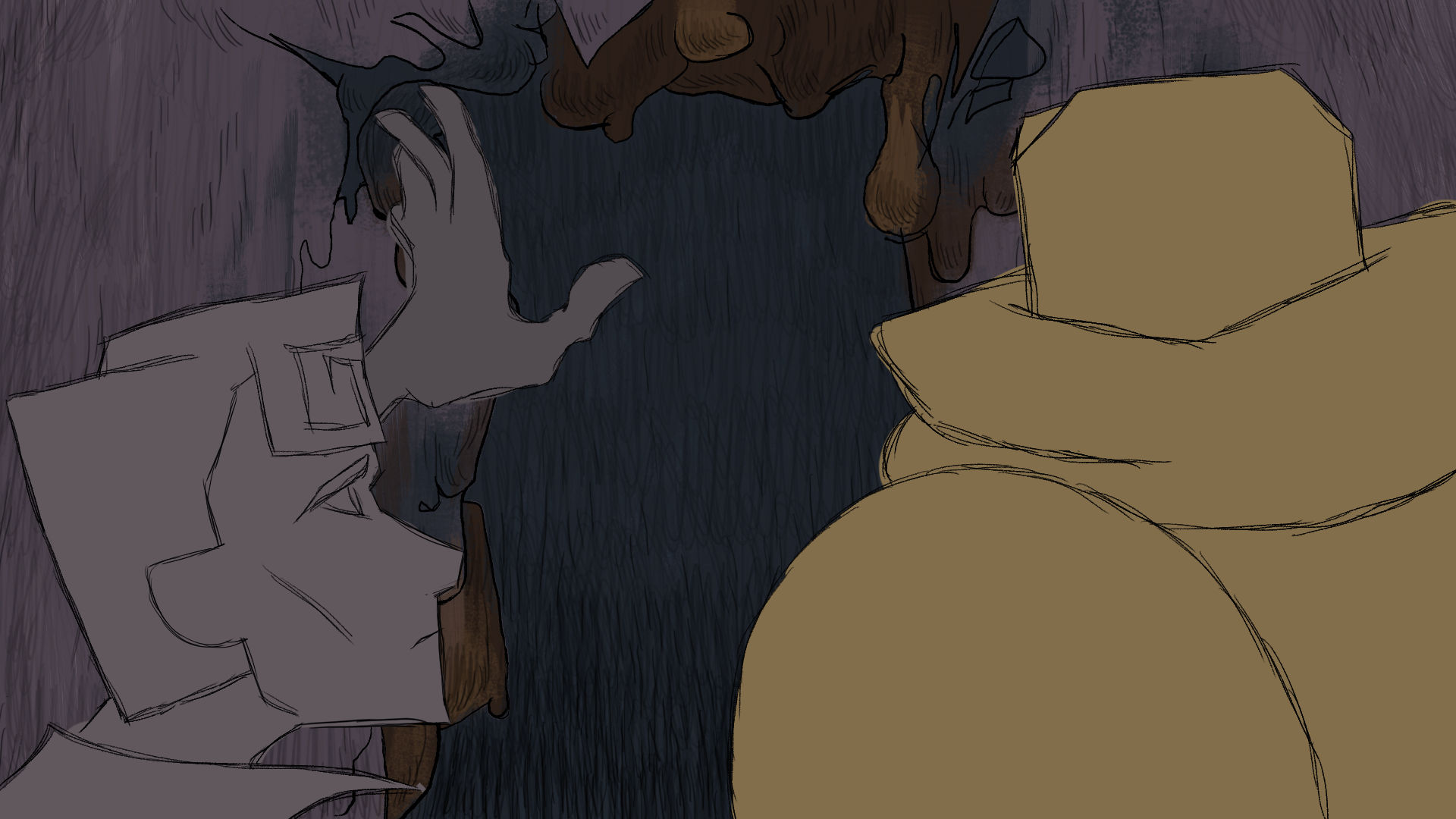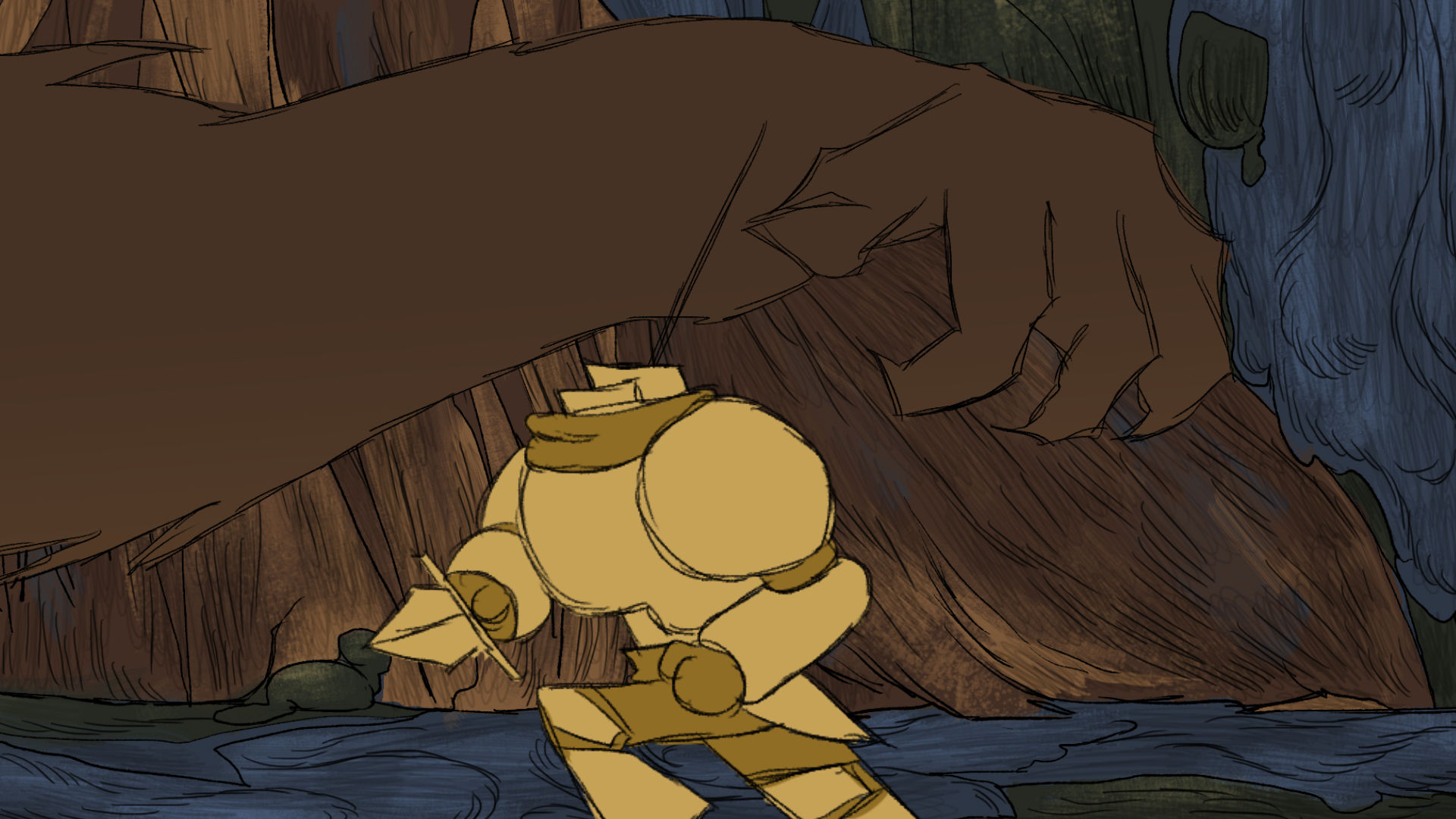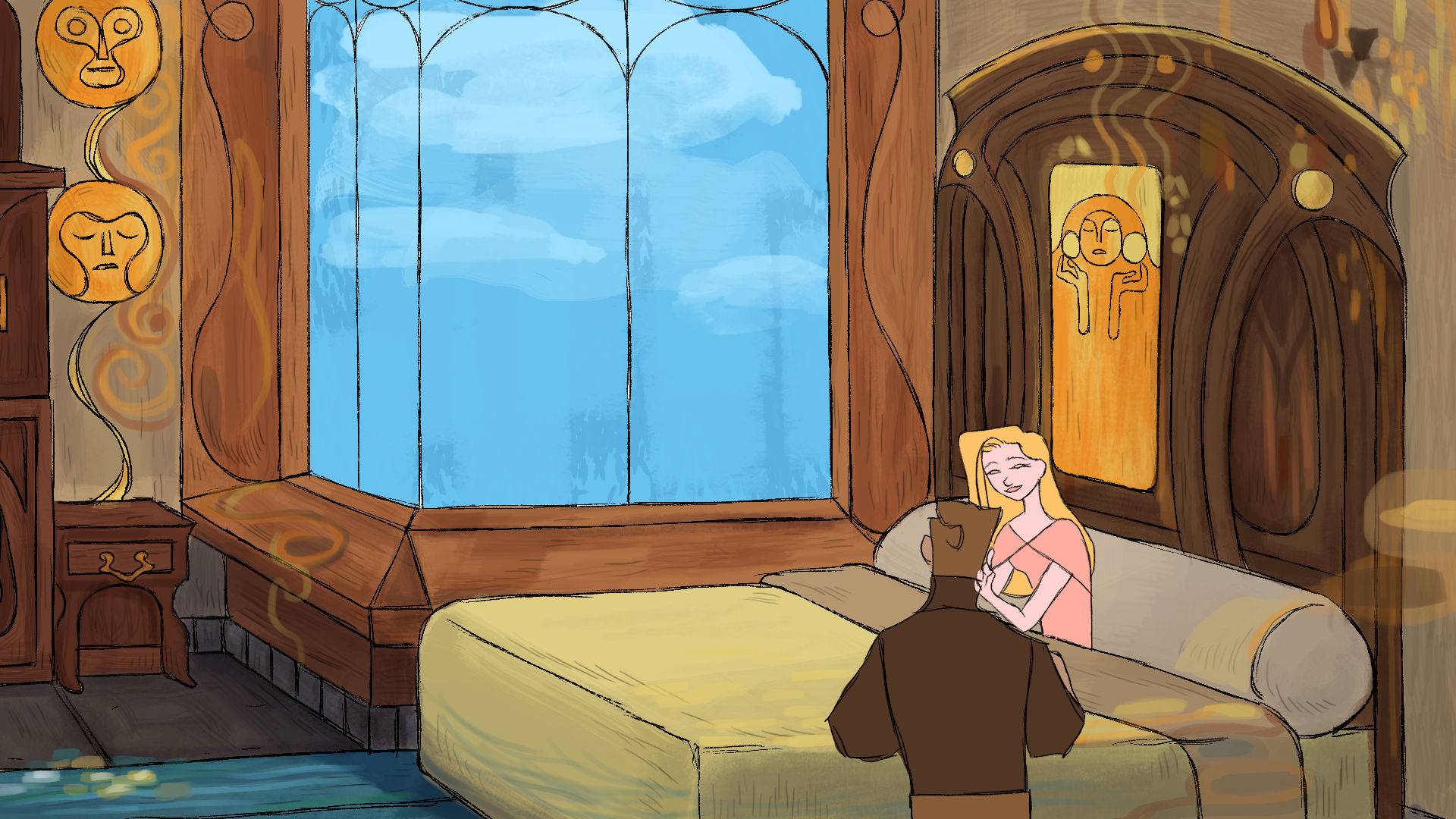
A monster is slain, the Knight’s journey comes to an end and peace returns.
The project An Die Freude is my exploration of adaptation to preserve yet propound Klimt’s Beethoven Frieze (1902) in a new perspective as a 2D animated sequence.
An die Freude is a 2D animation which explores the allegory of Klim'ts Beethoven Frieze (1902). It follows a Knight as he is guided to defeat a monster residing within a house consumed by rot and slime. I used Photoshop to design and draw out majority of the art for the animation. To animate the sequence, I used Clip Studio Paint for all moving elements and camera movements.
Driven by my appreciation of classical art and aspiration to make a 2D animation, the Capstone project was a great opportunity to see how my knowledge in the 3D animation workflow could be applied in this medium. I especially wanted to build my skills in presenting narrative and developing a 'world'. The aspect of adaptation was added to give myself a strong art foundation to focus heavily on for research, design and constructing concepts.
Adaptation is an intriguing device which is most often seen in books often bought into cinematic existence. Even movies themselves are constantly remade again. However, adaptation of paintings themselves into cinema is extremely uncommon. The few examples which exist tends to just be paintings which have moving parts. Classical paintings are often seen with the connotation of something quite rigid and I wanted to create something that would be more approachable yet true to the original reference. An impressive example of an animation sourced from a painting is Salvador Dali and Disney's collaboration Destino (2003). This successful animation which embraces the artist and his art effectively was a strong inspiration for my capstone project. The entertainment value added to the artwork through movement also made the art piece more accessible.
I researched further into the painting, the artist and it's temporal context to present these concepts through a 2D animation workflow, designing environment, characters, selecting narrative points and assigning visual symbols. The obscure narrative initially interpreted from the original art piece is driven from the aesthetic of the characters and their arrangement. The presence of the obvious hero, villain and a happy ending suggests a typical trope. This shifts into confusion upon further viewing. Without context of the painting's participation in the 14th Vienna Secessionist exhibition, the woman with the Lyre seems to be an odd addition to the frieze. She doesn't fit in with the trope, yet the size of the space she commands indicates her significance to the piece. This was resolved with the studying of Art Nouveau, the secessionist movement lead by Gustav klimt, and the concept of 'Gesamtkunstwerk' (Total art). As a result, the philosophical principles underlying Klimt's painting was recognized and became critical in my process in adapting Beethoven Frieze.



